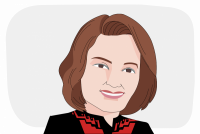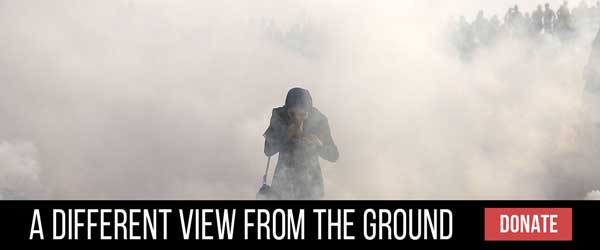A record-breaking 26 Palestinian women were elected to office in Israel’s local elections. Despite the unprecedented numbers, there is still a long way to go.
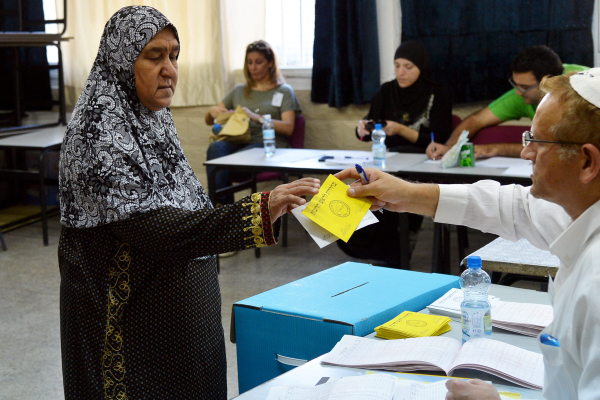
Arab women made history in the last round of local elections in Israel held in late October. A total of 26 Arab women were elected across the country, including the first Druze and first Bedouin woman, respectively, as well as an unprecedented four female heads of political parties.
In the past months, civil society and women’s associations banded together to encourage more Arab women to participate in local elections and exercise their right to vote. (Full disclosure: the organization I manage participated in that campaign.) The political fortress that Arab men have built for themselves in this country is still impenetrable, and it will take time before its gates are open to women. And yet, it seems that the old guard of local politicians in Arab communities has finally understood that women are on the rise.
The tide has been changing over the last decade, manifesting in several ways. The first trend is that more youth, women, and educated Arabs are fed up with the failed “council of wise men” approach. Liberal voices have pushed for more progressive perspectives and candidates, which sometimes includes feminism. The second trend reflects a wider, pan-Israeli development: a shift from party politics toward broader coalitions built from grassroots activists. These coalitions can be based on family ties; in more optimistic cases, they are based on the shared goal of improving local services, such as education, welfare, health, housing, etc.
In a conversation with Vera Baboun, the first female mayor of Bethlehem, I sought to understand how it was possible that women were so politically integrated in the Palestinian territories (four women serve as mayors, four more are deputies, one heads a district, and four are village heads), while in Israel, Arab women are still fighting for the opportunity to run in local elections.
Baboun believes it has something to do with resisting the occupation and the role women play in that struggle. What more, under the Palestinian Authority, there is a legally-mandated quota that women make up a third of any political list. Palestinian women were supposed to hold significant political influence in the aftermath of the First Intifada and the Oslo Accords, said Vera, but “we still have a long way to go.”
Historically speaking, the complicated political situation that Palestinian citizens of Israel have to navigate has kept women in the margins of political life. After the Nakba in 1948, local authorities were the only political avenue available to Palestinian in Israel, and they were mostly dominated by men, creating a situation in which local politics ran along tribal and patriarchal lines for 70 years. Women were limited to preparing coffee for the family nobles, who would discuss the future of “their” village for nights on end, scheming over how to maintain control in their hands.
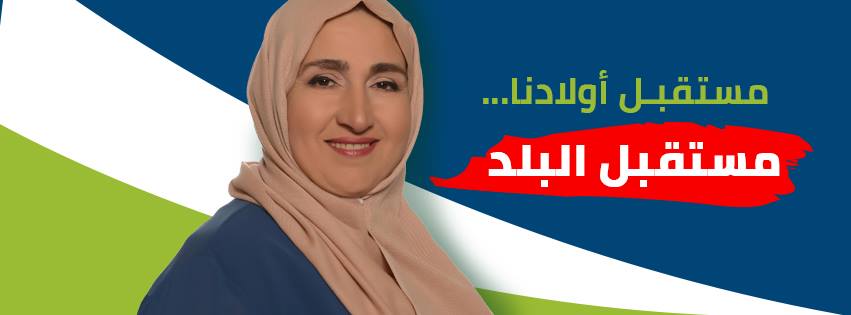
Around 340 Arab women ran in the October 30th municipal elections: 12 of them topped their lists as lead candidates. Five years ago, only one woman was the head of a list. None have been able to recreate the success of Violet Khoury, who in 1972 was elected mayor of Kafr Yasif — the first Palestinian woman to head a local council in Israel.
This year, Victoria Medlij Zahalka ran for councilwomen of Kafr Qara, an Arab town southeast of Haifa. Two women previously attempted to run for the post and dropped out, but Zahalka believed she stood a chance: “People are tired of the same hollow, all-talk-little-action leadership,” she said days before the election.
Zahalka, 55, is a mother of six, and a veteran and venerated school teacher. Her vision for the town included an investment in education and promoting an industrial zone that will take advantage of the town’s central location. Her list included five other women, and while she personally did not experience any threats or violence, there was pressure on her to drop out and accept a senior position instead. Zahalka insisted on pushing through: “I’ve built my trust with the public over many years through my professionalism and dedication,” she said.
But the revolution is quite a ways away, it seems. Zahalka received 139 votes, or 1.3 percent. She didn’t make it to the second round. Arab women with dreams of becoming mayors are going to have to wait longer.
Zeinab Hasan Abu Sweid, 35, is another story. She headed the “Youth of Change” list in Ka’abiyya’s local council, which represents a cluster of three small Bedouin villages in the north. Three women and a man ran under that list; the fourth female candidate was disqualified because she was too young (she hadn’t turned 21 yet).
Abu Sweid holds a graduate degree, is an educator and social entrepreneur, and manages the national service in the Arab community — and those are only a few of the accomplishments that her resume boasts.
The mother of two is an unlikely candidate, and not only because she is a woman: she is a Bedouin from the north (most Bedouin communities live in the south), she is divorced, and has a child with special needs.
Rather than burnish her feminist credentials, Abu Sweid decided to run on the youth ticket, since “our community is still not mentally prepared for female representation,” she explained. “As far as Arab parties are concerned, we, women, do not exist,” she added.
Abu Sweid only needed 340 votes to be elected. She made it clear before the elections that she doesn’t have any issues with the leading candidates, “as long as I have an opportunity to give a voice to the women and the youth.”
For two days after the elections, Abu Swied was nowhere to be found. I assumed that she disappeared from social media and wasn’t answering her phone because she had lost. Then I learned she was elected — the first Bedouin woman in the history of the state to become a local council member.
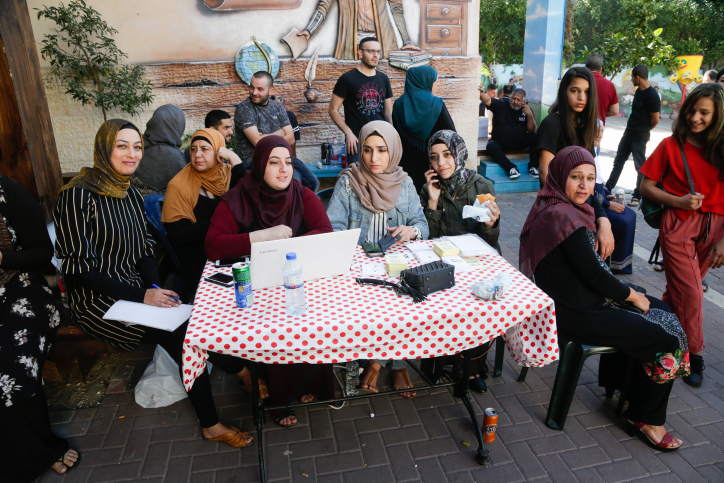
Unlike in Ka’abiyya, in Rahat, a Bedouin township in Israel’s south, there is still a long way to go. Amani Hamdan Abi Ziad, a resident of the city, is a member of the Sadra women’s nonprofit in the Negev, which organized a local, grassroots campaign to encourage Bedouin women to participate in elections.
The attempt to introduce women representatives was impossible, Abi Ziad recalled, as was the effort to create a women-only list. Women were heavily pressured not to get involved in politics. But Abi Ziad is not giving up: “Women will make it through the next time around,” she said, “and if not the next time, then after that. We will not get out of the way so easily.”
Abi Ziad said they managed to score a victory in the recent round of elections, nonetheless: they made all but one candidate make a campaign pledge to offer financial compensation to the city’s consultant on women affairs, and to allocate a budget for her. Furthermore, the deputy mayor of Rahat said in a radio interview that he was only able to win thanks to the women who went out to vote in droves, according to Abu Sweid.
For Dr. Nuha Badr, from the northern village of Maghar, it’s an entirely different story. Badr is a lecturer on education at Tel-Hai College and a veteran member of the far-left Hadash party in the north. She participated in the town’s primaries and was elected by a majority to head the list. Even before election day, it was clear that she was about to make history and become the first woman in the entire region to serve on the council.
Badr’s optimism was unwavering, and her charisma is heartwarming. In her speeches, she would say, without blinking: “I am your woman, and I have come to trim the longest mustache in the council.” She won three seats in the Maghar Local Council.
Other successes included Fidaa Shehadah, an activist and urban planner with a feminist and social justice agenda, who is now a representative at the Lod municipality. Umm al-Fahm saw a total of 15 female candidates run. The women of Daliyat al-Karmel, a Druze city near Haifa, established their list, and the women of neighboring Isfiya didn’t give up either. There, Samira Azam will be the first Druze councilwoman. Shahira Shalabi, one of the founders of the first Arab feminist organizations in Israel, was elected to Haifa’s city council as a representative of the left-wing Hadash list.
From the remote villages to the bigger cities, Arab women are entering local politics. Their entry into public life may be slow, but it is a natural and healthy development. It’s inspiring to see how determined these women, who are often the most marginalized in our society, are. Their eloquence and awareness are a sign of the important job that women’s organizations are doing in the most far-flung places across the country.
That’s all the beauty in feminism: to believe that a big change is certainly going to come. And along the way, we learn to appreciate and enjoy the small steps in the right direction. In the last local elections, we’ve taken 26 steps forward.
A version of this article was first published in Hebrew on Local Call. Read it here.

